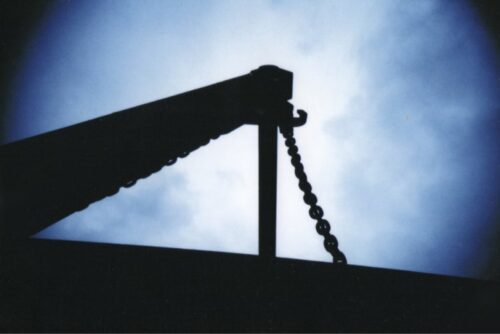When it comes to industrial lifting, efficiency and safety are paramount.
Hoists play an essential role in material handling in numerous industries by providing a reliable means to lift heavy loads. There are various types of hoists, but chain hoists and wire rope hoists are among the most commonly employed.
While both serve the same primary function, they excel under different circumstances due to their unique characteristics. Understanding the distinctions between the two can greatly impact your operation’s productivity and cost-effectiveness.

Overview of Chain Hoists
Chain hoists are widely used due to their simplicity, versatility, and portability. They use a metal chain to lift and lower a load, which is often manually operated though electric and pneumatic options are available. They are suitable for loads up to 5 tons, although specialized versions may lift more. As seen at https://www.rud.com.au/, they are usually used in construction, workshops, and smaller manufacturing operations. Their ability to provide vertical or near-vertical lifting makes them ideal for these applications.
Overview of Wire Rope Hoists
Wire rope hoists are commonly used in demanding lifting applications, particularly when dealing with heavy loads that surpass the capacity of chain hoists—reaching and even exceeding 20 tons. These robust hoists operate by utilizing a drum around which a strong and durable wire rope is meticulously wound. Powered by heavy-duty motors, they deliver reliable and efficient lifting capabilities. Found predominantly in manufacturing and industrial environments, these hoists provide the advantage of precise and controlled lifting, making them well-suited for continuous operations. Their ability to handle substantial weights with precision and ease makes them an indispensable asset in various industries.
Key Differences Between Chain Hoists and Wire Rope Hoists
Load Capacity
Chain Hoists: Ideal for lighter loads and most effective for applications requiring less than 5 tons of lifting capacity.
Wire Rope Hoists: Designed for more significant lifting requirements, they can efficiently handle heavier loads, often in excess of 20 tons.
Lifting Speed
Chain Hoists: Although varies, they generally offer a slower lifting speed, which can be advantageous for precise or delicate operations.
Wire Rope Hoists: Generally, they offer faster lifting speeds, which is beneficial for high efficiency in industrial applications.
Durability and Maintenance
Chain Hoists: They possess fewer moving parts, which leads to easier maintenance and repair but might not be as durable over time with continuous heavy-duty use.
Wire Rope Hoists: Characterized by their robust construction, which allows them to withstand rigorous use over longer periods, albeit necessitating regular professional maintenance to ensure optimal functionality.
Cost Considerations
Chain Hoists: More cost-effective both in initial purchase and maintenance, making them suitable for budget-conscious operations.
Wire Rope Hoists: Typically entail higher initial investment and upkeep costs, but their durability and efficiency can offer better long-term value for constant heavy use.
Factors to Consider When Choosing Between Chain Hoists and Wire Rope Hoists
Load Requirements
When evaluating the weight of materials that your operation frequently lifts, it is crucial to choose a hoist that not only has the appropriate capacity and durability but also meets the specific requirements of your daily tasks. By considering the weight of the materials in detail, you can ensure that the hoist you select is capable of handling the demands of your operations effectively and safely.
Environmental Factors
When considering the working environment, it’s important to take into account various factors such as whether it is outdoors or indoors, if it involves dusty or wet conditions, and the potential for temperature extremes. These conditions can have a significant impact on the performance of different hoists. By carefully evaluating these factors, you can determine which hoists are better suited for specific conditions and ensure optimal functionality in your operations.
Cost Considerations
When making a decision on a hoist system, it is important to carefully consider not only the initial investment but also the long-term operational costs. These costs include maintenance, repairs, and replacement parts. By taking into account these factors, you can ensure that you choose a hoist system that not only meets your immediate needs but also remains cost-effective and efficient in the long run.
Safety Considerations
When it comes to safety, it is of utmost importance to carefully consider the features of the hoist. Make sure that it not only meets but exceeds the necessary safety requirements and complies with the industry standards. By doing so, you can ensure that it will effectively cater to the specific demands of your application, providing you with the peace of mind you need.

Whether you lean towards a chain hoist or a wire rope hoist should be influenced by careful scrutiny of your specific needs and operational conditions. It is not simply about the choice between two lifting mechanisms but about selecting the right tool that ensures your operations are safe, efficient, and economical. Always seek professional advice tailored to your context and invest in regular training and maintenance to safeguard the longevity and productivity of your chosen hoisting system. Your investment today in the right type of hoist will manifest as seamless operations and reduced overheads in your future industrial endeavors.
With this comprehensive understanding of the differences and applications of chain hoists and wire rope hoists, you are better equipped to make an informed decision that will elevate your industrial capabilities to new heights.





